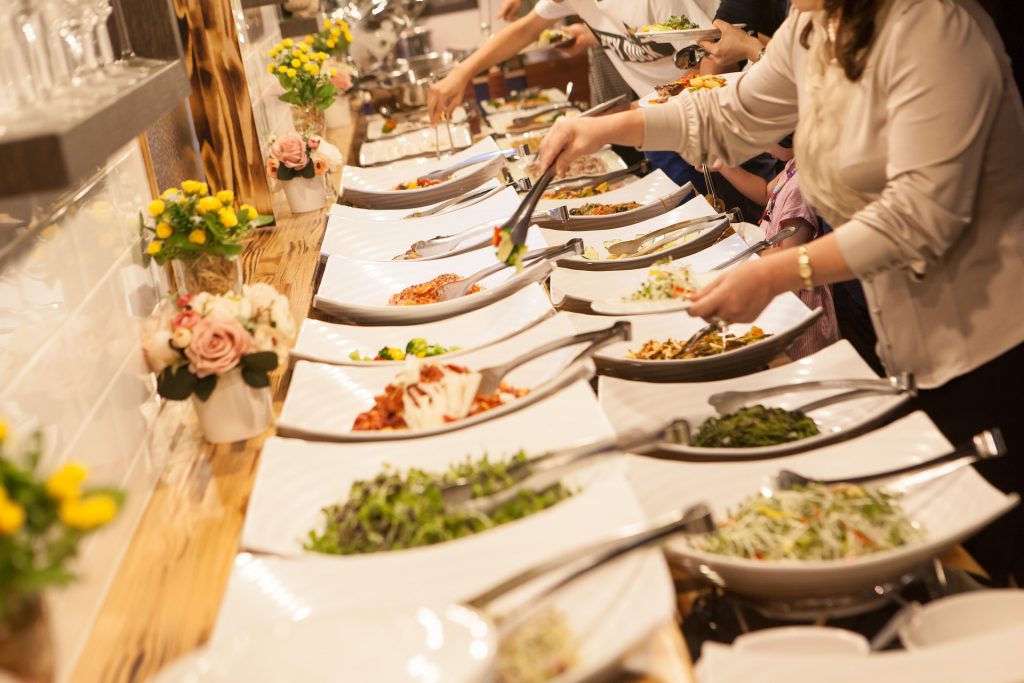The word buffet wasn’t always about the food. It is a word that meant the French sideboard furniture from which the meals were served. Overtime, buffet came to mean the style of serving food instead of the furniture.
The equivalent for the buffet is smorgasbord and the Finland term, brannvinsbord. Although the buffet we know today is a less formal style of dining, it was a high class thing back in the 16th century that was enjoyed by merchants and the bourgeoisie.
Buffets rose in popularity in the 1900s and by the time it reached the shores of depression stricken America, the buffets changed its focus on quantity over quality with the business idea of having to serve less tables.
The most popular restaurants are concentrated in Las Vegas, but let’s say you live somewhere else other than Las Vegas, you can always go to awesome buffet restaurants like Golden Corral or Borgata buffet. The best buffet rated in the US is currently Bacchanal Buffet in Las Vegas.
“But it’s my first time going to a buffet! Should I just dig in?” Before you start gorging on all the mouth-watering food there are a few things you should know about buffets.
There are four types:
- Simple buffets are self-service buffets and after eating waiters clear the tables
- Station type buffets allow guests to be served the drinks only and they can fill their plates at the buffet line
- Modified deluxe buffet upgrades beverages being served to include coffee and dessert and the cutlery are already set on the table – guests can get the dishes themselves
- Deluxe buffets have waiters serve the appetizers, soups, salads, and beverages.
Now that you know how the types of buffets work (and save yourself the awkwardness of waiting to be served just in case you go to a simple buffet ) you can start feasting. It’s that simple!
Sadly, COVID-19 has closed a lot of businesses, especially businesses which tend to have more crowds. Buffeterias are no exception, and among other types of restaurants, they have the highest risk for transmitting the virus due to everyone touching everything at the table.
Federal regulations specifically have guidelines that forbid self-service operations. Drink stations at many fast food restaurants were not spared, and the usage of common utensils or dispensers is also on the list. Buffet’s core concept is the use of these methods and these regulations have put a wall around it.
Last May 8 2020, California-based Souplantation announced its permanent closure of their business – all 97 restaurants – and laid off 4400 people. It wasn’t the first time they closed restaurants, but this time around COVID did Souplantation a bad one.
So is there still a chance for buffets to recover? The closure of buffet style restaurants culled the players in the competition. Although the closure was due to federal regulations, some have taken the opportunity to change their business strategies, relabeling their businesses to an all-you-can-eat format while still providing the default dining service in non-buffet restaurants.
Golden Corral’s sales performance after the regulatory closure was impressive as well, and it being one of the largest buffet businesses indicates that buffets phasing out is not going to happen anytime soon, unless another wave of COVID infections require another shutdown.
How did Golden Corral perform so well despite these ? Golden Corral actually discontinued buffets, and advised customers to shift to take-outs only. To decrease the overall risk of infection among its employees and customers, Golden Corral closed most of its restaurants as a business strategy and to minimize losses.
The bigger threat to the buffet industry is not actually the COVID-19 pandemic, but the increase in food delivery service. Even if the buffet industry exists without the pandemic, people switching to door-to-door service will be a clear disadvantage.
This has been the trend for the last decade. With the advent of the internet and an increased interaction with apps that provide convenience at the tip of your fingertips, most businesses are closing and converting shopping centers to warehouses, restaurants to working kitchens, and even clinics into online consultation websites. The pandemic has definitely changed the business environment.
